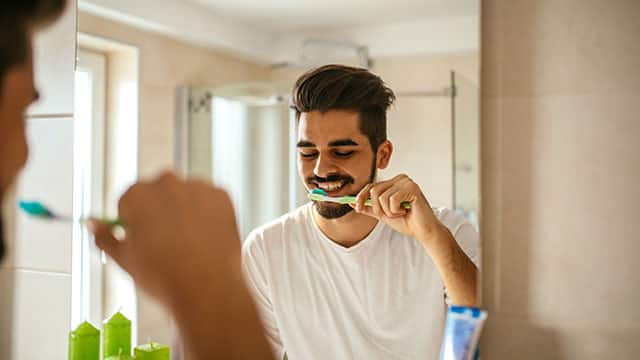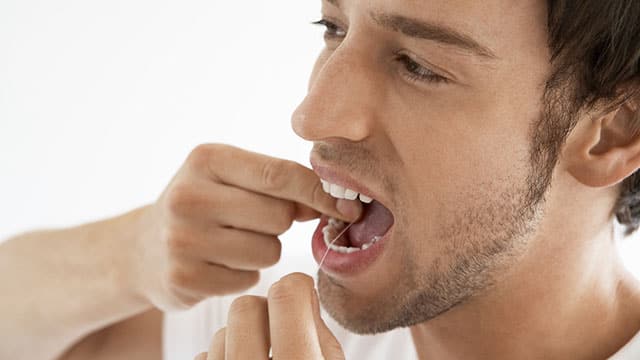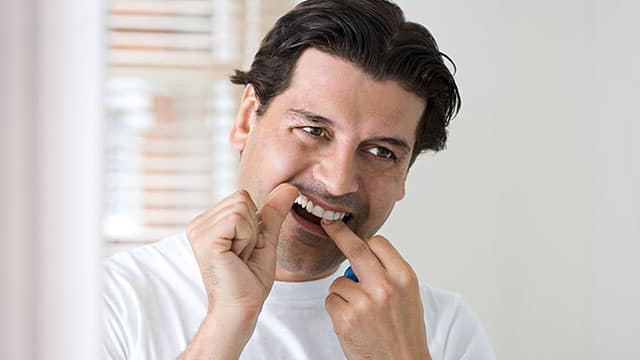Electric or Manual: Which is Best?
This is one of the most common questions I get, and the answer is that there's no single "best" option—it's all about what works for you. Many people can effectively clean their teeth with a manual toothbrush. If your teeth feel clean and your gums are pink and not bleeding after you brush, a manual toothbrush may be a great option for you..
For some, an electric toothbrush can be a great tool to help reach specific areas and remove plaque more efficiently. Research has shown that electric toothbrushes are often more effective at removing plaque and reducing gingivitis, especially for those with a pre-existing condition or limited dexterity, as the brush does most of the work for you. Many electric models also come with built-in timers, which can be a huge help in ensuring you brush for the full two minutes recommended by the American Dental Association (ADA).
Ultimately, the best toothbrush for you is the one you will use correctly and consistently.
The Brushing Bristles: Soft is the New Strong
When you're choosing a toothbrush, the bristles matter more than you think. You’ll often see options like extra soft, soft, medium, and firm.
From a professional standpoint, soft bristles are the recommended choice for most people. They are gentle yet effective at removing plaque and bacteria without risking damage to your enamel and gums. While medium and firm bristles may be an option, dental professionals generally advise caution, as they can be too harsh for some brushing styles and may contribute to gum irritation or enamel wear over time.
But not all soft bristles are created equal! There are a variety of soft bristle designs, each with unique benefits. For example, some brushes have tapered brush tips such as the Colgate SlimSoft or Colgate 360° Advanced Floss-Tip Bristles. These bristles are designed to gently reach and remove bacteria from just under the gum line and between teeth. In comparison, traditional soft bristles are often cut flat across and rounded at the tips, which is effective for cleaning the flat surfaces of your teeth. Other designs, like multi-level or angled bristles, are also engineered to improve cleaning efficiency in hard-to-reach areas.
A Handle with More Than a Grip
The handle of your toothbrush is more than just something to hold. It can be designed to improve your brushing experience. For improved control, look for a handle with an ergonomic design. A slight curve can give you a better grip and more control, making it easier to guide the brush and clean every surface of your teeth.
Size and Shape: It's All About the Fit
The size and shape of the toothbrush head are key to its effectiveness. Choosing a head that can comfortably access all surfaces of your teeth, particularly the back molars, ensures a more comprehensive and thorough clean. A compact head allows for easier maneuverability and better access to all surfaces of your teeth. We have spoken to patients at their dental visit that have told us they have selected a toothbrush with a large head, but this can make it difficult to reach the back of your mouth and behind your teeth. A smaller head size is often a better choice, as it can maneuver more easily into hard-to-reach areas and around your back molars. This ensures a more thorough cleaning and better plaque removal in those often-missed spots.
Don't Forget to Clean Your Tongue
Your tongue is a prime location for bacteria to hide, which can lead to bad breath and other oral health issues. While brushing your tongue is a good practice, many toothbrushes today have a built-in tongue scraper on the back of the head. This feature is more effective than bristles alone at removing bacteria and debris, which can lead to fresher breath and a cleaner mouth.
Choosing a Toothbrush for Kids
When it comes to children, choosing the right toothbrush is critical for their developing teeth and gums.
Size and Design: Look for a toothbrush with a small head that can fit comfortably in a child's mouth. The handle should be chunky and easy for small hands to grip. Fun designs and favorite characters can also make brushing more enjoyable and encourage good habits.
Bristles: Always choose a toothbrush with soft or extra-soft bristles to protect delicate gums and enamel from irritation.
Replacement: Children's toothbrushes often need to be replaced more frequently than adult brushes, especially if they are chewed on.
Your Brushing Routine: The Most Important Part
No matter what kind of toothbrush you choose, the most important thing is how you use it. To ensure you're getting a thorough cleaning:
Brush for two minutes: This is the minimum amount of time required to effectively remove plaque.
Create a routine: Start in the same area every time and work your way through a routine so you don’t miss a spot. Many electric toothbrushes have timers to help with this.
Replace your brush: The ADA recommends changing your toothbrush every three to four months, or sooner if the bristles are flared or worn. Worn bristles are a sign that you might be brushing too hard and are no longer cleaning effectively.
For more specific recommendations tailored to your unique oral health needs, be sure to ask your dentist and hygienist at your next regular cleaning. You can also explore options on sites like Colgate.com, which allows you to filter and find the brush that is best for you.
This article is intended to promote understanding of and knowledge about general oral health topics. It is not intended to be a substitute for professional advice, diagnosis or treatment. Always seek the advice of your dentist or other qualified healthcare provider with any questions you may have regarding a medical condition or treatment.
ORAL HEALTH QUIZ
What's behind your smile?
Take our Oral Health assessment to get the most from your oral care routine
ORAL HEALTH QUIZ
What's behind your smile?
Take our Oral Health assessment to get the most from your oral care routine















